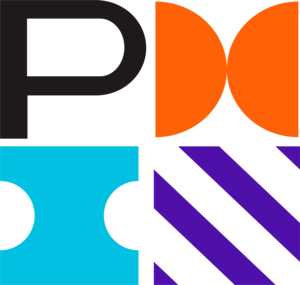Large enterprises face the challenge of scaling agile frameworks across multiple teams and departments. The Scaled Agile Framework (SAFe) has emerged as a popular solution to address this complexity, offering a structured way to implement agile practices on an enterprise-wide scale. This blog post will dive into the key benefits of implementing SAFe in large enterprises, supported by real-world examples, and explore how IMC Institute’s SAFe Scrum Master Certification can prepare you for success in this space.
What is SAFe?
The Scaled Agile Framework (SAFe) is a set of principles, processes, and best practices that enable large organizations to adopt agile methodologies across multiple teams. Unlike traditional agile methods like Scrum or Kanban, which are typically used by smaller teams, SAFe is designed to scale these practices at the enterprise level. The framework provides guidelines for roles, responsibilities, work planning, and aligning the efforts of various teams toward a common business objective.
By integrating Lean, Agile, and DevOps, SAFe helps organizations foster innovation while improving quality, reducing time-to-market, and increasing employee engagement.
Real-World Example: LEGO
LEGO, the iconic toy manufacturer, faced challenges in scaling agile methods across its vast IT and product development departments. By implementing SAFe, LEGO streamlined its processes, aligned its teams, and improved overall collaboration. The framework helped LEGO reduce delays and brought higher transparency to the product development pipeline. As a result, the company was able to introduce new product innovations to the market faster than before, showing how SAFe can drive efficiency in large organizations.
Top Benefits of Implementing SAFe in Large Enterprises
1. Alignment Across the Organization
One of the most significant challenges for large enterprises is ensuring that all teams are working toward the same strategic goals. SAFe provides a unified framework for aligning teams, departments, and leadership under a shared vision. By clearly defining objectives through the Program Increment (PI) planning process, SAFe ensures that everyone in the organization is on the same page.
For example, a global financial services company implemented SAFe to align its IT and business units. By synchronizing goals and timelines, the company increased its ability to deliver new digital services more rapidly, maintaining its competitive edge.
2. Improved Time-to-Market
SAFe empowers large organizations to deliver products faster by minimizing delays and streamlining the decision-making process. By integrating lean principles, SAFe reduces unnecessary bureaucracy and promotes faster decision-making at all levels. This accelerates the overall product lifecycle, from idea generation to product release.
In the case of John Deere, the global leader in agricultural machinery, SAFe enabled the organization to significantly improve its software development cycle. By introducing SAFe, John Deere reduced time-to-market for its digital farming solutions, allowing the company to stay ahead in an increasingly competitive industry.
3. Increased Collaboration and Communication
Large enterprises often suffer from silos, where different departments and teams work in isolation, leading to communication breakdowns and inefficiencies. SAFe promotes cross-functional collaboration by creating Agile Release Trains (ARTs) that bring together various teams working on different parts of the same project.
For example, Philips, a multinational healthcare technology company, used SAFe to bridge the gap between its product development, marketing, and engineering teams. This increased collaboration resulted in a 30% improvement in team efficiency and smoother delivery of healthcare solutions.
4. Enhanced Transparency and Visibility
In large enterprises, tracking progress and identifying bottlenecks can be a daunting task. SAFe offers enhanced visibility through the use of visual management tools such as Kanban boards and agile portfolio management. This transparency helps leadership understand where projects stand, identify risks early, and make informed decisions.
Take the case of Bosch, a global engineering and technology company, which implemented SAFe to improve visibility into its automotive software development processes. By adopting SAFe, Bosch was able to reduce project risks and address issues in real-time, ultimately leading to a more reliable product development process.
5. Improved Employee Engagement and Morale
SAFe emphasizes a culture of empowerment and continuous improvement. Teams are given more autonomy in decision-making, fostering a sense of ownership and accountability. This empowerment not only boosts productivity but also enhances job satisfaction and overall morale within the organization.
At Cisco, implementing SAFe led to a notable increase in employee engagement. Teams felt more involved in the strategic decision-making process, leading to greater collaboration and innovation. This, in turn, improved Cisco’s ability to deliver new networking solutions faster.
6. Better Quality and Risk Management
SAFe’s built-in quality practices ensure that defects are caught early in the development cycle, reducing the cost and time associated with rework. Additionally, SAFe promotes continuous integration, which allows teams to address risks proactively rather than reactively.
A well-known example comes from the aerospace company Lockheed Martin, which adopted SAFe to manage the complexity of its software development processes for advanced defense systems. The structured approach offered by SAFe reduced the number of software defects and helped Lockheed Martin deliver projects within tighter deadlines.
Why Get SAFe Scrum Master Certification from IMC Institute?
As large enterprises continue to adopt SAFe, the demand for certified SAFe professionals has skyrocketed. IMC Institute offers a SAFe Scrum Master Certification, equipping you with the knowledge and skills to lead agile transformations in large organizations. By enrolling in this program, you will gain a deeper understanding of SAFe principles, Agile Release Trains (ARTs), and Program Increment (PI) planning, making you an invaluable asset to any enterprise seeking to scale its agile practices.
Additionally, IMC Institute offers PMP certification accredited by PMI, which is another key credential for professionals looking to advance their project management careers. The combination of SAFe Scrum Master and PMP certifications will give you a well-rounded skill set to manage complex, large-scale projects efficiently.
Summary
Implementing SAFe in large enterprises offers numerous benefits, from improved time-to-market to enhanced collaboration and transparency. As more organizations recognize the value of scaling agile methodologies, the demand for certified professionals continues to grow. By obtaining your SAFe Scrum Master Certification from IMC Institute, you position yourself at the forefront of this growing field. Additionally, the option to pursue PMP certification offers a unique opportunity to further enhance your project management capabilities.
By integrating SAFe, organizations can not only achieve better business outcomes but also foster a culture of continuous improvement and innovation. Whether it’s delivering new products faster, increasing transparency, or improving employee engagement, SAFe provides the tools and framework to drive success at scale.
For more information about SAFe Scrum Master and PMP certification programs at IMC Institute, visit our SAFe Scrum Master Certification page.






